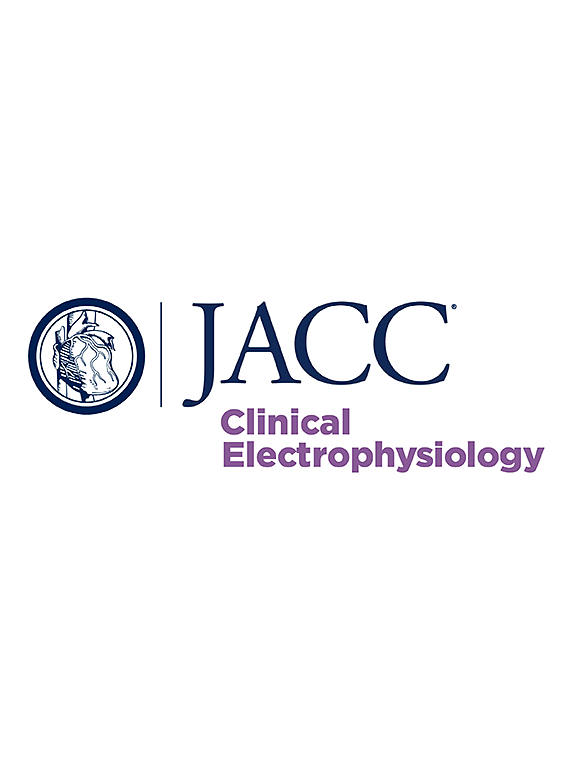人心外膜脂肪细胞来源的SPARCL1在心血管手术后房颤中的新作用。
IF 7.7
1区 医学
Q1 CARDIAC & CARDIOVASCULAR SYSTEMS
引用次数: 0
摘要
背景:术后心房颤动(POAF)与短期和长期发病率和死亡率相关。然而,心外膜脂肪细胞调节POAF的能力仍然知之甚少。目的:探讨人心外膜脂肪细胞来源的脂肪因子在心肌氧化还原状态和POAF调节中的可能作用。方法:作者前瞻性研究了274例预定进行心脏直视手术的患者。最后,纳入149例已知无房颤的患者,分为POAF组和非POAF组。采用心外膜脂肪组织活检和分离的前脂肪细胞来探索与POAF相关的重要分泌脂肪因子。结果:53例(35.6%)患者发生POAF。对代表POAF或非POAF组的背景匹配分化前脂肪细胞进行全基因组表达谱分析,并使用所有队列样本进行定量聚合酶链反应验证作为生物重复,结果显示,在POAF组中只有SPARCL1显著下调。分化前脂肪细胞中SPARCL1信使RNA的表达与前脂肪细胞培养基中SPARCL1蛋白的浓度相关。SPARCL1减轻新生大鼠肌细胞血管紧张素ii诱导的氧化应激。将人诱导多能干细胞来源的心房心肌细胞与分化的前脂肪细胞共培养,发现非poaf患者的前脂肪细胞可抑制心肌氧化应激。人心外膜分化前脂肪细胞中SPARCL1的低表达与术后长期不良心血管事件的高风险相关。结论:这些研究结果表明,来自心外膜分化的前脂肪细胞的SPARCL1可能是一种重要的旁分泌脂肪因子,通过改善心肌氧化还原态来调节POAF和随后的心血管结局。本文章由计算机程序翻译,如有差异,请以英文原文为准。
Novel Role of Human Epicardial Adipocyte–Derived SPARCL1 in Postoperative Atrial Fibrillation Following Cardiovascular Surgery
Background
Postoperative atrial fibrillation (POAF) is associated with short- and long-term morbidity and mortality. However, the ability of the epicardial adipocyte to regulate POAF remains poorly understood.
Objectives
The authors investigated the possible role of human epicardial adipocyte–derived adipokines in the regulation of the myocardial redox state and POAF.
Methods
The authors prospectively studied 274 patients who underwent scheduled open-heart surgery. Finally, 149 patients without known atrial fibrillation were enrolled and divided into POAF and non-POAF groups. Epicardial adipose tissue biopsies and isolated preadipocytes were used to explore the important secretable adipokines associated with POAF.
Results
POAF occurred in 53 (35.6%) patients. Genome-wide expression profiling of background-matched differentiated preadipocytes representing the POAF or non-POAF groups and quantitative polymerase chain reaction validation as a biological replicate using all cohort samples revealed that only SPARCL1 was significantly downregulated in the POAF group. SPARCL1 messenger RNA expression in differentiated preadipocytes correlated with SPARCL1 protein concentration in the preadipocyte culture medium. SPARCL1 attenuated angiotensin II–induced oxidative stress in neonatal rat myocytes. Coculture of human induced pluripotent stem cell–derived atrial cardiomyocyte with the differentiated preadipocyte revealed that the preadipocytes derived from non-POAF patients suppressed myocardial oxidative stress. Low SPARCL1 expression in human epicardial differentiated preadipocytes was associated with a higher risk of long-term adverse cardiovascular events after surgery.
Conclusions
These findings suggested that the SPARCL1, derived from epicardial differentiated preadipocytes, may be an important paracrine adipokine that regulates POAF and subsequent cardiovascular outcomes by improving myocardial redox state.
求助全文
通过发布文献求助,成功后即可免费获取论文全文。
去求助
来源期刊

JACC. Clinical electrophysiology
CARDIAC & CARDIOVASCULAR SYSTEMS-
CiteScore
10.30
自引率
5.70%
发文量
250
期刊介绍:
JACC: Clinical Electrophysiology is one of a family of specialist journals launched by the renowned Journal of the American College of Cardiology (JACC). It encompasses all aspects of the epidemiology, pathogenesis, diagnosis and treatment of cardiac arrhythmias. Submissions of original research and state-of-the-art reviews from cardiology, cardiovascular surgery, neurology, outcomes research, and related fields are encouraged. Experimental and preclinical work that directly relates to diagnostic or therapeutic interventions are also encouraged. In general, case reports will not be considered for publication.
 求助内容:
求助内容: 应助结果提醒方式:
应助结果提醒方式:


